Blood-Spattered Brides: Female Vampires and Male Anxieties in European Erotic Horror Cinema
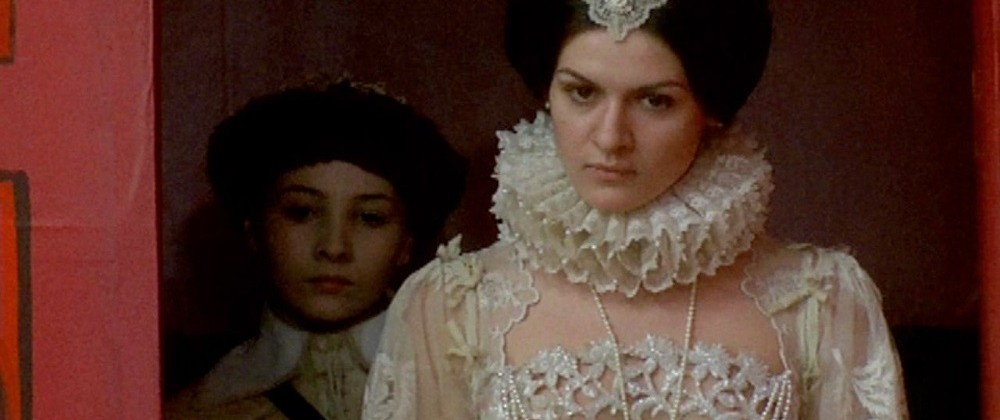
Cronenberg be damned, there are few cinematic marriages quite as oxymoronic as the erotic horror film; if the goal of horror is to repulse and the goal of erotic films is to arouse, then the two are fundamentally at odds with each other. Yet, despite this, horror and eroticism have always been inextricably linked in cinema due to their mutual appeal to the body, as opposed to the appeal to the mind that is presented in non-genre films. No other field of horror demonstrates the simultaneous fascination with repulsion and arousal as the vampire film, particularly the wave of European erotic vampire films that began with Jean Rollin’s uncanny fever dream The Rape of The Vampire (Jean Rollin, 1969) and fizzled out by the end of the 1970s. These films, preoccupied as they were with the idea of lesbians as literal bloodsuckers and the disintegration of heterosexual relationships through vampirism, act as a telling lens through which to view straight male anxieties in the wake of the sexual revolution.
It’s a commonly held idea that highly sexualized vampires are a relatively new phenomenon, beginning with Anne Rice’s The Vampire Chronicles novels and culminating in the more recent Twilight book series and the vampire soaps True Blood and The Vampire Diaries, but this is explicitly untrue; the vampire myth has always been inherently sexual and at its roots is based in ideas of sexual violence. The image of a typically male monster flying in through a window and biting into the neck of a beautiful younger woman is one that clearly revolves around ideas of penetration, sexual assault, and virginity. Early vampire fiction like James Malcolm Ryner’s Varney The Vampire, J. Sheridan Le Fanu’s Carmilla, and Bram Stoker’s Dracula is preoccupied with the idea of sex and death being closely intertwined and at times indistinguishable from one another. Because these writings are the basis of virtually all modern vampire fiction, this theme of dangerous and violent sexuality has become inseparable from the vampire mythos. All three of the aforementioned stories deal in corrupted depictions of heteronormative sexuality; in the case of Carmilla —which is a foundational text in the lesbian vampire canon to say the least— that corruption is explicit homosexuality, whereas in Varney and Dracula the corruption is male impotence.
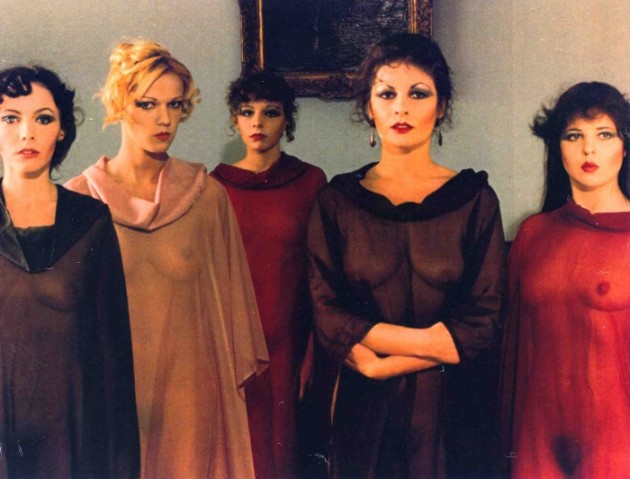
Fascination
Freud, outdated as many of his ideas are, wrote in his Three Essays on the Theory of Sexuality that “if the store of semen is exhausted, not only is it impossible to carry out the sexual act, but the susceptibility of the erotogenic zones to stimulus ceases, and their appropriate excitation no longer gives rise to any pleasure” (Freud 283). In other words, penetrative heterosexual sex cannot be pleasurable for the male party without semen, and if the sexual fluid of male vampires is blood then they lack semen and are effectively impotent by Freud’s definition. Given that male vampires are thus incapable of heterosexual masculine sexual performance they are thus coded as feminine. Instead of the penis being their primary sexual organ, their sexual performance revolves exclusively around their teeth, mouth, and tongue, body parts that bring to mind the vagina dentata myth. Yet they retain the penetrative aspect of male sexual performance, making the vampire an intersex figure in certain ways, their sexuality neither explicitly masculine nor explicitly feminine.
That being said, the traditional male vampire is decidedly not a queer one in terms of sexual orientation, as when he is himself penetrated—the stake penetrating his heart—he is vanquished, a ritual that could be seen in relation to homophobia. He is comfortable being the one who penetrates others, and that penetration gives him life in the same way that penetrative vaginal sex can bring about life in the form of procreation, but as soon as he is himself penetrated he dies, not unlike a heterosexual man being violently averse to and disgusted by the penetrative act of gay sex. In this sense, he simultaneously defies heteronormative masculinity with his impotence and upholds that same masculinity with his subtextual homophobia.
Conversely, the female vampire is with very few exceptions coded as a queer figure. The eponymous antagonist of Le Fanu’s Carmilla, a character who has served as the prototype for nearly every fictional female vampire since the eponymous novella’s release, bites the protagonist Laura not in her neck but rather in her breast, a feminine symbol. Laura is attracted to Carmilla yet repulsed by her, partly because she stands starkly in opposition to heteronormative gender roles as a sexually aggressive woman who seduces other women. Her being penetrated by the stake at the end of the story and vanquished is a victory for the characters of the novel in that it is a restoration of heteronormativity to the literary world of the novella: a less-than-progressive ending to an otherwise revolutionary vampire story.
That dissonance between progressive, proto-feminist ideas utilized in service of regressive, even homophobic values is a common thread throughout the erotic lesbian vampire films of 1970s Europe. It’s no coincidence that all of these films, despite featuring female protagonists and dealing with homosexuality, were directed by heterosexual men; if horror films are cinematic tools used to cope with collective traumas and anxieties, then these vampire films represent the greatest nightmares of straight men in the face of female sexual liberation. The narrative motifs contained within these films—the most prominent being that of the lesbian vampire seducing a newlywed bride away from her impotent or passive husband—are in most cases thinly veiled manifestations of deeply homophobic and misogynistic anxieties. By creating films depicting these anxieties, these directors placed themselves in positions of power to regain control of a phenomenon—the rise of sexual liberation and feminism in the western world—that in many ways left them feeling powerless.
It’s worth noting that not all the films display this regressive outlook, however. The films of Jean Rollin, who in many ways is the central figure of this unofficial filmic movement, typically revolved around strong matriarchal vampires killing straight men who hold antiquated notions of sexuality and gender politics— the triumph of the liberated lesbian over the close-minded hetero man. There’s a certain twisted solidarity with the women’s movement in these films, and if Rollin does still fetishize lesbian sex through a male gaze he can at least be said to be well-intentioned in that his goal is to celebrate female sexuality and condemn hegemonic heterosexual masculinity. His film Fascination (Jean Rollin, 1979) is among the greatest artistic triumphs of this European erotic vampire horror boom and speaks to the idea of the female vampire as an amoral, nihilistic figure. Underlying this is a rejection of the association between women and fragility, creating a film that stands as a brutal reversal of the gender roles that dictate men are to be dominating and women submissive.
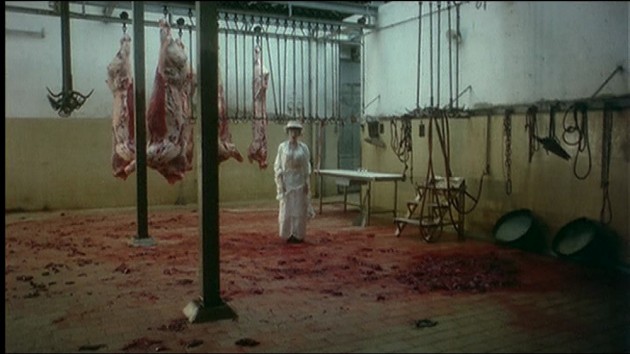
Fascination
The film revolves around a cult of women who meet at a medieval chateau once a month to participate in a mysterious ritual, eventually revealed to be a human sacrifice in which they collectively drink the blood of the victim. The women are not vampires in the traditional sense – their sanguine diets are a treatment for anemia, typically sated with ox blood but once a month they indulge in the more desirable option, human blood. In their midst is a male thief taking refuge in the chateau, believing throughout the film that he is holding the women hostage when, in actuality, they are manipulating him from moment-to-moment.
The conflict between the women’s Sapphic tenderness and their unfeeling sadism is hammered in from the opening scene, in which two of the three female protagonists – Elisabeth and the matriarch of the cult, Hélène – stand in a blood-soaked abattoir while wearing Victorian dresses. The stark contrast—or, perhaps more aptly, the visual association—between the purity of their ornate, delicate costumes and the raw violence of the animal carcasses flanking them on all sides recalls De Palma’s Carrie (Brian De Palma, 1976), yet Rollin takes it in a more complex direction by introducing sexual tension. Before they drink goblets of ox blood to treat their anemia, the two share a tender moment when Hélène kisses her fingers and places the finger against Elisabeth’s lips, adding an element of eroticism to an otherwise disturbing scene. Elisabeth then dips her finger in her goblet, and, in extreme close-up, sensually rubs the blood across her lips.
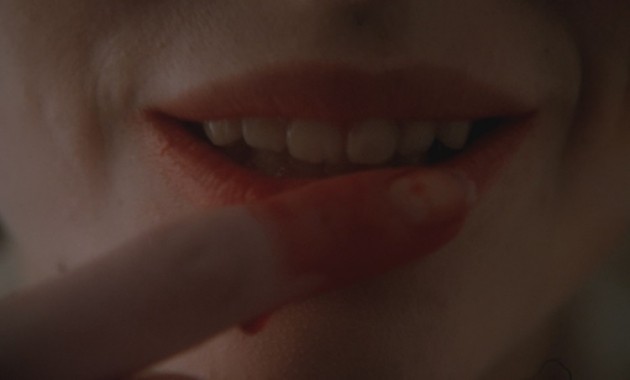
At the end of this long take, the camera slowly pans up further to focus on her eyes, which are staring directly into the camera, challenging our gaze and the gaze of the man present who insists that this ritual is purely for medical purposes and not for her enjoyment. Much to his chagrin, she does enjoy the act of consuming the blood, and the final line of the film between Elisabeth and Hélène, “You look beautiful like that with blood on your mouth,” harkens back to this moment of extracting erotic pleasure from blood and death.
In between that close-up of blood on Elisabeth’s lips and the final line of dialogue that mirrors it, it is made clear that these women are unsentimental and nihilistic in their behavior; they enjoy killing and drinking blood because they are capable of the former and have the power to obtain the latter. They kill for blood and don’t care who gets hurt in the process, as exemplified by Elisabeth killing her lover Eva to defend the thief hiding in their chateau, explaining it away by saying “I loved Eva, and I killed her… the love of blood may be more than that of the body from which it flows.” There’s a Darwinian streak to their behavior throughout the film; the desires of the body override the desires of the heart and mind, and there’s a running theme of survival of the fittest throughout the film that permits the unfeeling to survive over those who allow sentiment to inform their decisions. In keeping with this, Elisabeth murders the thief shortly after she had brutally killed Eva under the guise of protecting him; she didn’t love the thief as it initially appeared but rather wanted all the blood to herself, murdering Eva so she could get him alone.
The film as a whole is defined by moments like this, portraying these women as deeply sadistic. This is where Rollin can be seen as a feminist filmmaker despite working within an often-misogynistic sub-genre; he allows these women to be deeply cruel and sadistic without ever punishing them for violating societal norms. While these women could be reduced to mere femme fatales, that label isn’t quite accurate because femme fatales are typically only permitted to commit acts of wrongdoing when there is a reckoning of equal weight around the corner. They don’t get away with evil, but rather the Powers That Be—almost always being straight male directors—cut them down in their prime as a lesson to the male protagonists. The sadistic women of Fascination, on the other hand, get away with their unwavering cruelty and are even rewarded for it, such as when Elisabeth benefits from the murders of both Eva and the thief. These women are not narrative devices but are instead complex figures subverting cinematic traditions by giving into their most base, aggressive desires without being punished for it. They are cold-blooded killers without tragic backstories or third act redemptions, an affront to the conventional vampire film structure in which the typically male protagonist vanquishes the vampire antagonists.
The women of this film embody a more progressive trope that Angela Carter refers to as the “Sadeian woman” in her book-length essay The Sadeian Woman and the Ideology of Pornography. Carter says that in most media depictions of female sexuality, “women do not normally fuck in the active sense… They are fucked in the passive tense and hence automatically fucked-up,” yet in the works of the Marquis de Sade he “urges woman to fuck as actively as they are able, so that powered by their enormous and hitherto untapped sexual energy they will then be able to fuck their way into history and, in doing so, change it” (Carter 31). The women of Fascination certainly fuck in the active sense, using their sexuality to manipulate their male captive into believing he’s the captor. After he locks them in a room together, they laugh and pull out a master key, demonstrating that they are the ones who are truly in power, then begin kissing each other, a sexual rejection of the man. When the man discovers Eva having left the room she was locked in, she kisses him on the face to mock him. They eventually have sex – Eva mockingly challenging him to rape her, a display of her control of the situation – and she allows the man to be on top, giving him the illusion of dominance while she stalls him until nightfall, when the marchioness will arrive and sacrifice him at midnight.
The color palette in this sex scene is particularly telling of the subtextual power dynamic; Eva wears a muted off-white dress, projecting an image of chastity and non-threatening femininity, but beneath the dress a vivid red corset can be seen and beneath them is a red rug of the same shade. Red being a color closely associated with both sexual passion and aggression, this reflects her role as a wolf in a sheep’s clothing, putting on an appearance of submissive and passive femininity yet covertly exploiting her sexuality as a tool of violence against the man. This tension comes to a head during Eva’s next sex scene, this time with a bandit in the stables. She occupies the dominant position on top of him, and mid-coitus she stabs him in the stomach with a knife hidden in the hay, taking on a sexually aggressive and dominant masculine role by—ironically—penetrating him with a distinctly phallic weapon.
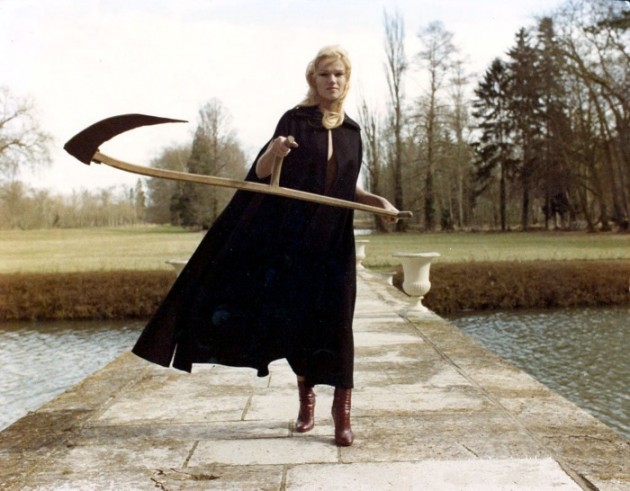
Fascination (Brigitte Lahaie)
The film’s thesis seems to be encapsulated in the indelible image of Eva charging towards the camera with a massive scythe in hand, about to kill a second bandit immediately after the stables scene. This is the image the film is best remembered for: death not as a pale old man or a cloaked skeleton but rather a beautiful young blonde woman, a vision of health. In Fascination more than any other Rollin film, the women project an image of submissive feminine sexuality to gain the trust of men before revealing their true nature: sadistic, domineering, and nihilistic in their quest for pleasure, sexual and otherwise. The central fear in the film is not a fear of vampirism or even death but a fear of sexual deviance – in this case, lesbianism and bisexuality – and of powerful, man-hating, dominant women who treat straight men worse than straight men treat women.
This same ever-shifting dynamic of submission and dominance between sexual partners is played up once more, albeit more subtly, in Daughters of Darkness (Harry Kümel, 1971), in which newlywed husband Stefan struggles with ideas of masculinity while on his honeymoon given that he is a closeted bisexual man. He deals with his confused relationship with his sexuality and masculinity in the least healthy way possible: by overperforming machismo and violently abusing his wife Valerie. This tug-of-war between Stefan’s misguided ideas of the domineering masculinity of heterosexuality and the supposedly compromised masculinity of homosexuality is complicated further by the intrusion of a third party, Delphine Seyrig’s elegant and perpetually youthful Countess Bathory who seeks to seduce his wife. The narrative plays out as a battle for dominance between Stefan and Bathory, both seeking to possess Valerie— Bathory by means of seduction and persuasion, Stefan by means of physical force and psychological abuse.
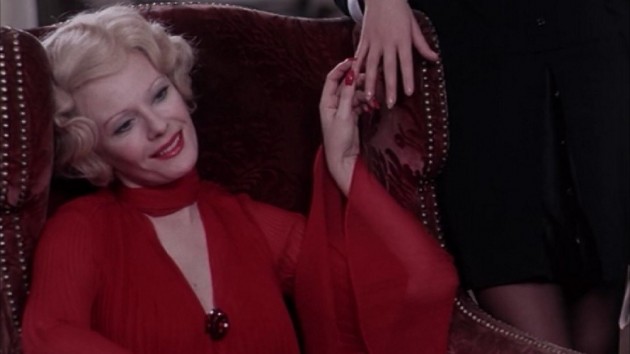
Daughters of Darkness: The Enchanting Delphine Seyrig as Countess Bathory
There is certainly an icy and sinister quality to the Countess—her red, black, and white outfits evoke images of Nazi uniforms and the unfeeling violence associated with fascism—yet she isn’t necessarily the antagonist of the film. If anything it is Stefan, whose feelings of sexual inadequacy lead to his embodiment of a brutish toxic masculinity, who occupies a more villainous role. The Countess, by comparison, is almost a savior-type figure, freeing Valerie from the shackles of an oppressive and unhealthy heterosexual relationship. Bathory is liberated and sexually promiscuous, seducing women without ever truly feeling affection for them. Stefan does this too, having an affair with both his gay lover known only as Mother while also eventually setting his sights on the Countess’ submissive assistant Ilona, but he does it out of a desire for the same liberation and power the Countess enjoys.
The film makes it hard to identify with him due to his unrepentant cruelty towards every other character in the film, but if he is the antagonist then he is certainly a tragic one. The sadistic role he takes on to achieve dominance over the other three characters is due to his feeling trapped and oppressed by heteronormative gender roles. He certainly earns little to no sympathy for his blatantly abusive behavior, but in many ways the larger evil force in the film is the machismo embodied by normative heterosexuality, which traps Stefan and presses him to act increasingly brutal in order to occupy an authoritative and dominant male role that he believes is expected of him.
This is perhaps why in his death scene, when the Countess breaks a glass bowl on him and it slices both wrists, the framing of the shot is a clear allusion to the Lamentation of Christ in medieval and baroque art— Stefan is lying on the ground with his arms out and legs crossed as if having just been crucified, while Valerie and the Countess are on either side of him drinking from his wrists. While comparing such a profoundly unpleasant character to Christ seems like a problematic juxtaposition, the shot seems to position him as a victim of the larger oppressive schema of heterosexuality and the suffocating expectations of masculinity that come with it.
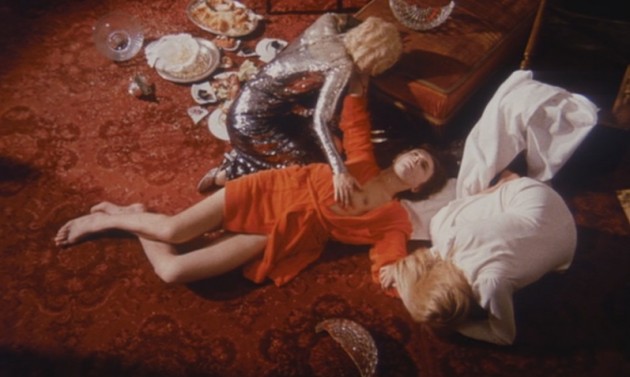
The film thus revolves around straight male inadequacy; Stefan’s abusive persona is rooted in his persistent belief that his queerness makes him less of a man, and thus he puts on a persona of violent masculinity to overcompensate for that. He beats Valerie immediately after his gay lover emasculates him over the phone, and when it becomes clear that Countess Bathory is seducing Valerie he starts a clearly vindictive affair with her assistant Ilona to regain his power over the women around him. This is a cause-effect pattern that repeats throughout the film: someone emasculates him, thus figuratively castrating him, and in response he acts on his most primitive and aggressive masculine impulses to regain his sense of manhood and maintain dominance over all other characters. Countess Bathory encapsulates his entire attitude towards his marriage in one cutting remark when she tells Valerie, who believes Stefan loves her despite the pattern of abuse, that Stefan “dreams of making out of you what every man dreams of making out of every woman: a slave, a thing, an object for pleasure.”
The Countess portrays all men as possessive and violent by nature and all women to be nurturing and more capable of love, which is surely a problematic concept given that she possesses the same capability for violence as he does— she just hides it beneath a veneer of elegance and cool seductiveness. Although she acts as a liberating force in the film, she embodies the idea of the monstrous feminine, a trope in horror films and literature for women who project an image of femininity and seductiveness but secretly possess a capacity for inhuman cruelty and violence. This is perhaps fitting given her character’s namesake, the so-called “bloody countess” Elizabeth Bathory, a Hungarian aristocrat who had virginal teenage girls brought to her castle and brutally tortured so that she could bathe in their blood and absorb their youthfulness.
Along with the title character of Carmilla, Bathory is the prototype for the modern female vampire, and her mythology is explored more faithfully in the erotic anthology film Immoral Tales (Walerian Borowcyzk, 1973). The third segment of the film adapts Valentine Penrose’s 1970 book “The Bloody Countess” to retell the story of Bathory through striking imagery and minimal dialogue. Given that this segment is more grounded in factual accounts of Bathory’s life than Daughters of Darkness, it is a vampire film in the same way that Fascination is; there are no supernatural beings, but it involves a predatory women obsessed with draining the blood of others and thus can be seen as a realist reading of the vampire myth.
Although Walerian Borowcyzk is without a doubt an artist and an auteur—and a misunderstood one at that, considering how often contemporary and even recent critics have accused him of being a pornographer—his films are unabashedly erotic, far more so than anything by Rollin or Kümel; they revolve purely around sexual politics, every other scene is a sex scene, and in this particular segment of Immoral Tales there are often dozens of nude women permeating the frame at any given moment.
The camera is drawn to nude bodies and lingers on extreme close-ups of pubic hair and breasts—close-ups which seem to disembody these parts from the girls, objectifying the women so consciously as to almost be disturbing in the way it takes voyeuristic cinematography to a new extreme. The camera forces the viewer to isolate the body parts from the body, dismissing any accusations of the segment being pornographic because it draws so much attention to the audience’s predatory perspective and rubs the viewers’ noses in how dehumanizing it is. In one shower scene, extreme close-ups of the women’s pubic hair and backsides are crosscut with even more extreme close-ups of the Countess Bathory’s eyes looking directly into the camera, simultaneously staring at the women and challenging the audience with her intense, unblinking eyes. This single-minded stare is both an ominous sign of things to come for the young women and a discomfiting acknowledgement of the viewer’s gaze that reduces these women to their bodies.
Still, the mood is largely idyllic and playful with only hints of menace for much of the segment, which takes its time in revealing what we are watching. The forty-minute segment takes up nearly half the film, a majority of which is spent showing young women being screened to come to the castle, with extreme close-ups of their body parts as their names are recited by the castle guards to emphasis that they are defined by their bodies, followed by fifteen minutes of the young women washing themselves and walking around the castle. The segment moves so slowly and with such subtlety that it becomes all the more shocking when violence finally enters the narrative and quietly disrupts the tranquil mood with copious bloodshed.
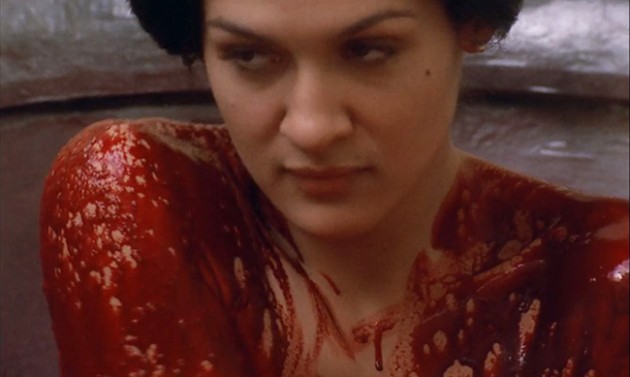
Immoral Tales
What begins as a moment of Sapphic desire when the throng of nude women surrounds the Countess, vocalizing in awe of her sheer white dress and caressing it as they follow her, slowly devolves into chaos as the women start smothering Bathory and tearing apart her dress. They start yelling in a sexual frenzy, one of them stuffing the Countess’ pearls in her vagina and many more groping at the Countess herself, until slowly their screams of pleasure dissolve into screams of terror as they begin fighting each other in hysterics. Pleasure turns into violence turns into pleasure turns into violence until we abruptly cut away to a tub filled with blood into which the Countess slowly descends.
The line between sex and violence is irrevocably blurred, and the effect is one of figurative castration for straight male viewers; the introduction of violence into the film is a vicious attack on the male gaze, swiftly rejecting the audience’s voyeurism by interrupting a moment of erotic pleasure (the women groping the countess) with visions of hysterical savagery (the women clawing at each other’s faces and subsequently being slaughtered off-screen). The post-climactic scene in which Bathory is finally bathing in blood paraphrases the earlier, more plainly eroticized scenes of the women showering, yet in this scene the bathing is grotesque and disturbing. The shot pattern is the same—close-ups that pan from the Countess’ breasts to her pubic hair to her backside—but the thick blood dripping from her body translates the erotic elements of the earlier shots into something far more sinister and nauseating. By making what was previously sexualized into something deeply repulsive, Borowcyzk attacks the viewer’s lustful gaze and deprives us of scopophilic pleasure.
The scene cuts back and forth between Bathory coated in blood and a taxidermies hawk mounted on the wall, making clear that she embodies the “monstrous feminine” trope and she is not prey to the camera’s dehumanizing eye but rather a predator who challenges the camera and defies objectification. The blood she bathes in may as well be the blood of the viewer considering that the scene is in many ways a direct attack on us for deriving pleasure from watching these events through the two-way mirror of the screen.
The fact that the blood bath scene is followed by the Countess lovingly dressing her young servant who conducted the murders in a beautiful translucent white dress and a pale white shawl so as to look like the Virgin Mary highlights what’s so disturbing and fascinating about the monstrous feminine in film: the collision and contradiction between the supposed purity of performative femininity and the unfeeling brutality juxtaposed with it. Unlike the young women who enter into a lustful frenzy and are murdered off-screen shortly thereafter, the Countess never breaks her icy exterior, maintaining a layer of calmness and serenity that is all the more shocking alongside the mass murder she orders. The tenderness she shows in this sequence as she dresses her servant and subsequently has sex with her is deeply unsettling because of its contradictions: she is not a nihilistic monster but rather a complex person who is capable of both ritualistic murder and romantic love. The true final scene of the segment, in which Bathory is arrested after it is revealed that that same servant and supposed lover sold her out to the local police, is thus an unsatisfying ending because by punishing Bathory for her crimes it provides too clean a solution and robs the narrative of the disconcerting ambiguity with which it treats her in the rest of the film.
These themes of figurative castration through the juxtaposition of eroticism and violence are explored extensively in the extensive filmography of Jess Franco. Throughout his career, Franco aimed to create films that bridge the gap between erotic cinema and art cinema, but he pursued this with far less success than Jean Rollin or even Walerian Borowcyzk; even his most diehard supporters admit that he took the approach of quantity over quality, and of the more than 200 films he produced during his five-decade career a vast majority are unwatchable. It’s possible to chalk it up to coincidence then that he did strike gold a small handful of times, albeit still not to the same degree as the far superior Rollin. His unpretentiously titled film Vampyros Lesbos (Jess Franco, 1970) is no masterpiece, emphasizing exploitative thrills over artfulness and featuring numerous tedious stretches, but it’s among his best works nonetheless and displays a clear aesthetic that speaks to the same sex-violence dichotomy as the films of Rollin and Borowcyzk.
What separates Vampyros Lesbos from something like Fascination or the Bathory segment of Immoral Tales is that in the latter films sex and violence are distinct entities that are juxtaposed for dramatic effect; in Franco’s film, sex and violence resemble each other and blur together, and the misogynistic elements are far more plainly foregrounded. The film, like many others from the same period of Eurohorror, follows a straight woman who becomes fixated on—and subsequently seduced by—a beautiful and mysterious lesbian vampire who pushes her to leave behind a life of suffocating heterosexuality for a life of hedonistic gay vampirism. It plays out as a nightmarish wet dream, dripping with sensuality and a moody atmosphere but nearly devoid of a coherent plot beyond that bare-bones premise. Franco is an untalented storyteller but has an eye for striking visuals, and thus the film succeeds more as a series of surreal and evocative images than as a compelling narrative.
This is true for the most memorable moment of the film: when the vampire countess Nadine first bites protagonist Linda after luring her to her secluded island. The myth of the vampire revolves around it being a metaphor for repressed sexuality, and the penetrative neck bite is the most overt manifestation of this. Franco takes this idea of the neck bite as a visual metaphor for sexual penetration and pushes it to its most unsubtle and blatantly eroticized extremes. Nadine gently kisses up Linda’s arm, presses her to the ground, then stands over her nude body while undressing. We cut to an image of a red kite flowing through the sky—an image of unfettered freedom to match the sexual liberation that Linda is feeling during her first lesbian encounter—then back to Nadine, now kissing up Linda’s chest, and then cut away once more to an image of a dragonfly spreading its wings. Nadine kisses Linda on the lips, then finally bites into her neck; Linda moans not in pain but in pleasure, and viscous blood drips from Nadine’s lips like semen.
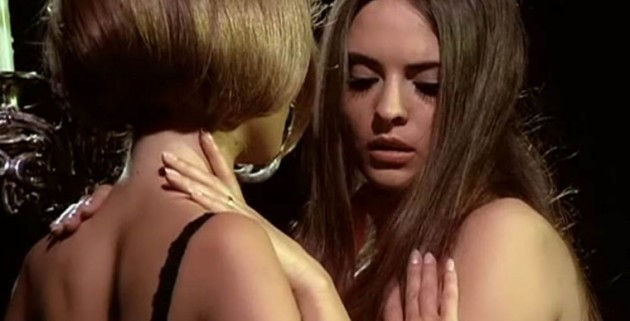
Vampyros Lesbos
That Franco does everything in his power to conflate the homoeroticism of this scene with heterosexual sex—the phallic penetration of the teeth puncturing skin to draw blood that resembles semen is barely subtext—highlights that, despite being a notable early example of a lesbian vampire film, the film portrays lesbian sex from a straight man’s point of view and uses it to titillate a straight male audience rather than to tell a love story. The film is in many ways rooted in homophobia and outdated male fears of lesbians “converting” straight women and stealing them away, and Franco seems to use the film as a rebuttal to that idea: he warps the homosexuality, not allowing the characters to feel pleasure for themselves but rather to feel pleasure for the viewer’s pleasure. His directing style turns the central lesbian relationship into something more digestible for his viewers because its portrayal skews more towards exploitation and pornography than towards a genuine romance.
To compound this, the film’s message seems to be one of explicit homophobia. In the climactic moment of the film, Linda finds Nadine in her home, sprawled on the couch and near-death. Nadine begs Linda to give her blood to revive her, but Linda ignores this and instead bites Nadine’s neck, draining her further, and says, “I don’t want to be like you,” before stabbing her through the eye with a long needle—an act that, in this film, is equivalent to the more classic stake-through-the-heart method. In the most literal sense, “like you” translates as, “like a vampire,” but given that the film places so much emphasis on its lesbian aspects to the point that it’s essentially titled “vampire lesbians,” this line more aptly translates to, “I don’t want to be a lesbian anymore.” At the end of the scene, we see her once again in her boyfriend’s arms, happily straight now, as she says she’ll never forget her experiences with Nadine, a sentiment that makes her sound like a teenager experimenting with homosexuality and deciding it’s not for her.
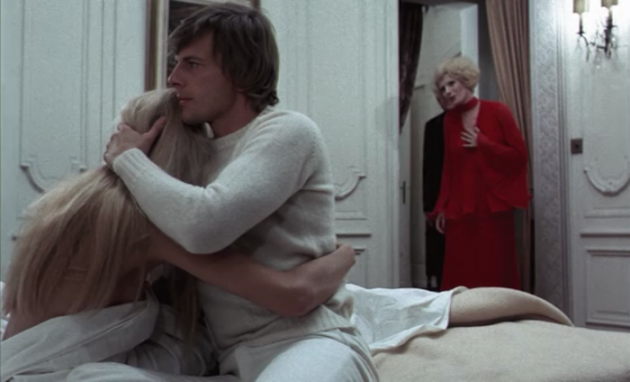
Daughters of Darkness
The message that this final sequence seems to impart is that homosexuality is evil and vampiric because it figuratively (and literally) feeds off of and drains straight women like Linda. Linda’s defeat of Nadine comes off as triumphant, biting back at a woman who she believes has been living off her like a parasite for the rest of the film. She has killed Nadine, the embodiment of her queer desire, and the film portrays it as a victory. In doing so, it takes on a latently homophobic message: homosexuality is at best a naïve phase and at worst a vampiric predator that must be vanquished to protect happy heterosexual couples.
That latter idea might as well be the thesis statement for all of these films; these vampire stories, all told by straight men yet fixated upon gay women, share a common message that, for better or worse, homosexuality is a formidable threat to society and straightness. In all of the films, lesbian vampires inflict psychological and physical harm on other characters, all while maintaining an air of indifferent elegance and manipulating others. They fulfill the promise of erotic horror as a genre: to arouse, as the vampires are overly sexualized by those around them and exploit their sexuality as a tool of persuasion, and to repulse, as their sexuality is inextricably linked with violence and decay. They exude both sex and death, seducing women and ruining men in quick succession, and the directors seem to attribute their homosexuality not as a trait of vampirism but rather their vampirism as a trait of their homosexuality. Lesbians are figurative vampires, these men seem to suggest, seductive but destructive women undermining the heteronormative order of western society. These films are thus worst-case scenarios for men insecure in their masculinity in the aftermath of the sexual revolution: murderous, sexually liberated women dominating straight men and stealing their wives, the ultimate nightmare of male oppression and sapphic tyranny.
Works Cited
Carter, Angela. The Sadeian Woman. Virago, 2006.
Deighan, Samm. Ed. Lost Girls: the Phantasmagorical Cinema of Jean Rollin. Spectacular Optical Publications, 2017.
Freud, Sigmund, et al. Three Essays on the Theory of Sexuality: the 1905 Edition. Verso, 2017.
Janisse, Kier-La. House of Psychotic Women: an Autobiographical Topography of Female Neurosis in Horror and Exploitation Films. FAB Press, 2014.
Le Fanu, Joseph Sheridan. Carmilla. Valancourt Books, 2009.
Nordine, Michael. “Daughters of Darkness.” Not Coming to a Theater Near You, 21 Feb. 2011, www.notcoming.com/reviews/daughtersofdarkness.
Schuck, Emily. “Re-Masculating the Vampire: Conceptions of Sexuality and the Undead from Rossetti’s Proserpine to Meyer’s Cullen.” Lux, vol. 2, no. 1, 2013, pp. 1–7., doi:10.5642/lux.201301.26.
Shearer, Laura. “Victims and Monsters: The Role of Female Characters Within Horror Narratives.” Next Projection, 23 Oct. 2013, nextprojection.com/2013/10/23/victims-monsters-role-female-characters-within-horror-narratives/.
Valentine, Genevieve. “How the Vampire Became Film’s Most Feminist Monster.” The Dissolve, Pitchfork Media, 20 Mar. 2015, thedissolve.com/features/exposition/964-how-the-vampire-became-films-most-feminist-monster/.
Zimmerman, Bonnie. “Daughters of Darkness: Lesbian Vampires.” Jump Cut, Mar. 1981, pp. 23–24., www.ejumpcut.org/archive/onlinessays/JC24-25folder/LesbianVampires.html.


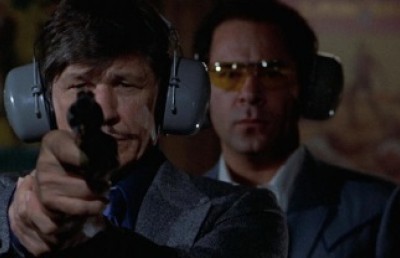
-small_400_258_90_s_c1.jpg)
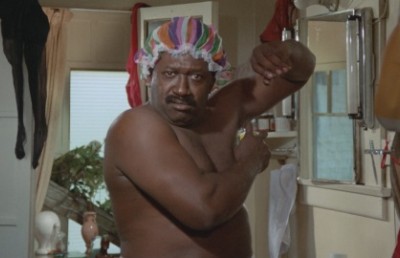
-small_400_258_90_s_c1.jpg)







